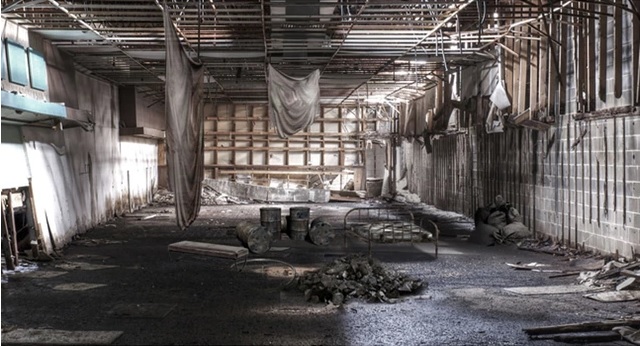Post-apocalyptic visual novel The Seed certainly has had a bumpy development since getting funded for £20,923 in March 2014. Most notably, developers Misery Dev (the people that managed to make S.T.A.L.K.E.R. even gloomier and more agonizing) seemed to have run out of money a little over a year since the inception of their project. Nevertheless, with enough determination the team managed to stay on track, recently announcing that writing for the game has been finished, consisting of 1020 A4 pages worth of text and 127 chapters in total.
Since we’re on a roll with the good news, I thought it would be a good idea to focus on The Seed’s latest Kickstarter update. It hits the nail on the head when it comes to showing off the game’s post-apocalyptic/hard sci-fi roots by presenting a rather in-depth interview with Joe Barron – labeled by Misery Dev as their dedicated “eco advisor”.
 As someone who studies the “quantitative population dynamics” of salamanders at Cornell University, Barron goes into the many specifics of creating a world ruled by biodiversity and scientific believably – a design mentality you definitely don’t see in many games nowadays. Without spoiling too much of The Seed’s narrative, he instead focuses on the many ways in which interactive works can invest players into their world through mechanics involving causality and credibility based on the natural properties of the portrayed world.
As someone who studies the “quantitative population dynamics” of salamanders at Cornell University, Barron goes into the many specifics of creating a world ruled by biodiversity and scientific believably – a design mentality you definitely don’t see in many games nowadays. Without spoiling too much of The Seed’s narrative, he instead focuses on the many ways in which interactive works can invest players into their world through mechanics involving causality and credibility based on the natural properties of the portrayed world.
I mostly see nowadays that many games simply focus on making “cool” and “badass” creatures and locations, without giving much of a thought on the underlying ecology or biology of it all.
While Barron praises games like Dwarf Fortress for creating an immersive word through smart and adaptive AI patterns, he also (unsurprisingly) gives S.T.A.L.K.E.R. as another example, mentioning the way the game’s mutated creatures get caught in anomalies, turning zones into more dynamic locations.
 Having a sense of realness is pretty essential for grim, post-apocalyptic games. After reading through the interview I’m even more intrigued to see how that aspect can translate into visual novel form. Obviously, a big portion of the aforementioned scientific accuracy would have to be portrayed through text, but it seems that Misery Dev is also heavily relying on the usage of carefully edited real-life imagery as a way to give further meaning to the struggle of being forced to fight for survival in a hostile world.
Having a sense of realness is pretty essential for grim, post-apocalyptic games. After reading through the interview I’m even more intrigued to see how that aspect can translate into visual novel form. Obviously, a big portion of the aforementioned scientific accuracy would have to be portrayed through text, but it seems that Misery Dev is also heavily relying on the usage of carefully edited real-life imagery as a way to give further meaning to the struggle of being forced to fight for survival in a hostile world.
Enough of my blabbering though – go ahead and check out the interview for yourself. If for nothing else, it certainly speaks for the developer’s commitment to achieving one truly immersive visual novel. Despite the financial troubles the team has had, it’s good to see a positive example of hard work paying off. Hopefully we’ll be able to judge the final product for ourselves soon, although there’s still no concrete release date.



